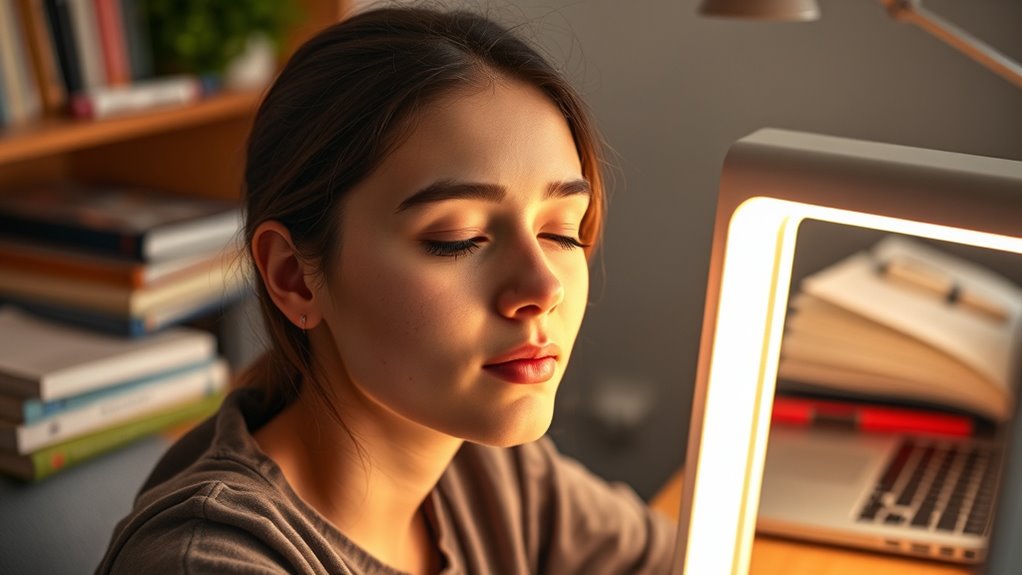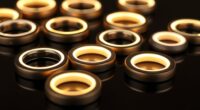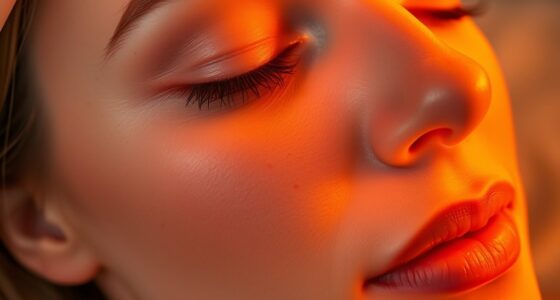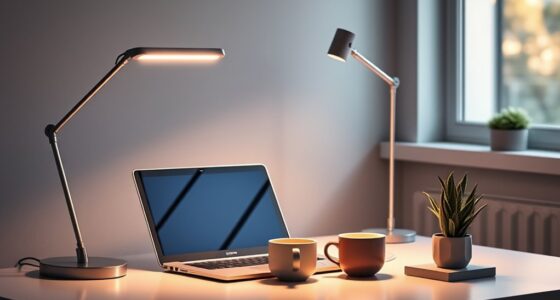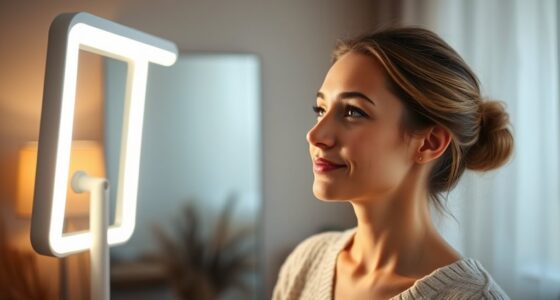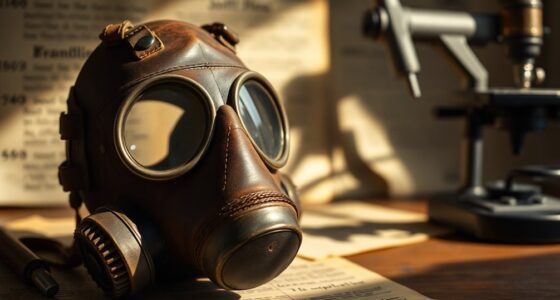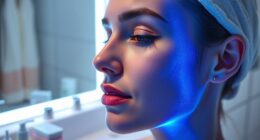Using light therapy during study breaks can help reset your internal clock and increase alertness naturally. By exposing yourself to bright, full-spectrum light for about 20-30 minutes each morning, you signal your brain to stay awake and improve your mood, focus, and sleep quality. It’s a safe, drug-free way to boost energy during busy academic periods. Keep exploring to discover how to maximize these benefits and stay in top shape during exams and routines.
Key Takeaways
- Light therapy boosts alertness during study breaks, helping students stay focused and refreshed.
- It can improve sleep quality, aiding skin recovery and reducing fatigue-related skin issues.
- Regular light exposure helps reset circadian rhythms, promoting healthier sleep and skin regeneration.
- Using light therapy is a drug-free, non-invasive way to enhance mood and skin health during stressful periods.
- Consistent morning light therapy supports better overall routines, contributing to skin renewal and academic performance.

Many students struggle with fatigue, poor concentration, and disrupted sleep schedules, especially during exam season or when adjusting to new routines. You might find yourself staying up late studying, only to wake up feeling sluggish and unfocused. It’s frustrating because your productivity dips, and your mood can suffer. That’s where light therapy comes into play. This non-invasive approach uses specific wavelengths of bright light to influence your body’s internal clock, helping you reset your sleep-wake cycle, boost alertness, and improve overall well-being.
Many students face fatigue and disrupted sleep, especially during exams or routine changes.
When you use light therapy, you’re essentially mimicking natural sunlight, which signals your brain to suppress melatonin—the hormone responsible for sleepiness—and promote alertness. By exposing yourself to a controlled amount of bright light, especially in the morning, you can help regulate your circadian rhythm. This regulation is vital because a well-aligned internal clock can make you feel more awake during the day and sleepy at night, leading to more restorative sleep. Better sleep, in turn, enhances your focus and mental clarity, making studying sessions more effective.
You don’t need fancy equipment for light therapy. Many students use light boxes or specialized lamps designed for therapeutic purposes. These devices emit a bright, full-spectrum light that’s much stronger than typical indoor lighting but safe when used correctly. The key is consistency—using the light box for about 20-30 minutes each morning can produce noticeable benefits within a few days to a week. During this time, you might also notice your mood improves, and your energy levels stabilize. This can be especially helpful when battling the post-lunch slump or feeling sluggish during late-night study sessions.
It’s important to follow safety guidelines when using light therapy. Avoid looking directly into the light, and keep the device at a recommended distance—usually about 16-24 inches from your eyes. If you have any eye conditions or skin sensitivities, consult a healthcare professional before starting. Also, try to use the therapy at the same time each morning to reinforce your body’s new routine. Combining light therapy with good sleep hygiene—like avoiding screens before bed and establishing a relaxing pre-sleep routine—can amplify its effects. Additionally, understanding the effects of light on circadian rhythms can help you optimize your use of light therapy for maximum benefit.
Ultimately, light therapy is a practical tool that can help you reset your study-break sleep clock, boosting your alertness and improving your sleep quality. It’s a simple, drug-free way to combat fatigue, sharpen your focus, and maintain a healthier routine during those stressful academic periods.
Frequently Asked Questions
Is Light Therapy Safe for Teenagers and Young Students?
Yes, light therapy is generally safe for teenagers and young students when used properly. You should follow the recommended guidelines and consult a healthcare professional before starting. Avoid overuse or exposure to very bright lights, as it can cause eye strain or skin irritation. When used correctly, light therapy can help improve mood, energy, and skin health, making it a beneficial tool for students balancing school and self-care.
How Long Does a Typical Light Therapy Session Last?
A typical light therapy session lasts about 20 to 30 minutes. Remarkably, studies show that most users notice benefits within just a week of regular sessions. During this time, you sit comfortably in front of a lightbox, allowing the light to penetrate your skin and influence your mood and energy levels. Keep in mind, consistency is key to seeing the best results, so stick with your routine.
Are There Any Side Effects From Daily Light Therapy Use?
Yes, daily light therapy can cause side effects. You might experience eye strain, headaches, or skin irritation if the light is too bright or used improperly. Some people also report feeling jittery or anxious after sessions. To avoid these issues, follow the recommended duration and distance, and consult a healthcare professional if you notice persistent discomfort or unusual reactions. Proper use minimizes risks and maximizes benefits.
Can Light Therapy Replace Other Skin Care Routines?
Think of light therapy as a helpful sidekick, but not the hero, of your skincare routine. It can boost your skin’s glow, but it shouldn’t replace your regular routine of cleansing, moisturizing, and sun protection. Relying solely on light therapy is like trying to run a marathon on a single stepping stone—your skin needs varied care to stay healthy and radiant. Keep your routines balanced for the best results.
What Is the Cost Range for Light Therapy Devices?
The cost of light therapy devices varies widely. You can find basic handheld models starting around $40 to $100, perfect for targeted treatments. Mid-range panels, suitable for broader skin areas, typically cost $200 to $500. High-end professional devices used in clinics or for extensive home use can range from $600 to over $2,000. Consider your needs and budget to choose the right device for effective skin benefits.
Conclusion
Think of light therapy as your personal sunrise during long study nights. Just as dawn gently resets the world, it refreshes your mind and skin, helping you shine brighter. When you feel overwhelmed, let this simple ritual be your daily morning, awakening your inner glow. Embrace this tool, and watch how it transforms your study breaks into powerful moments of renewal—your secret weapon to stay vibrant, focused, and ready to conquer each day.
